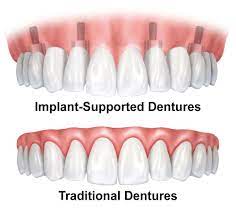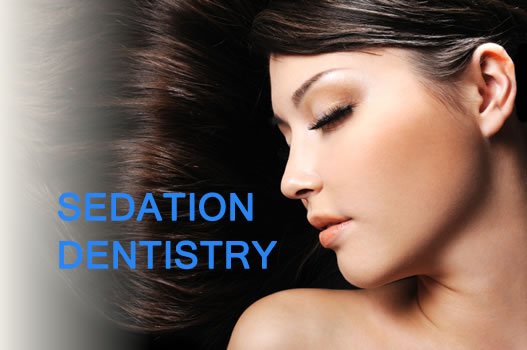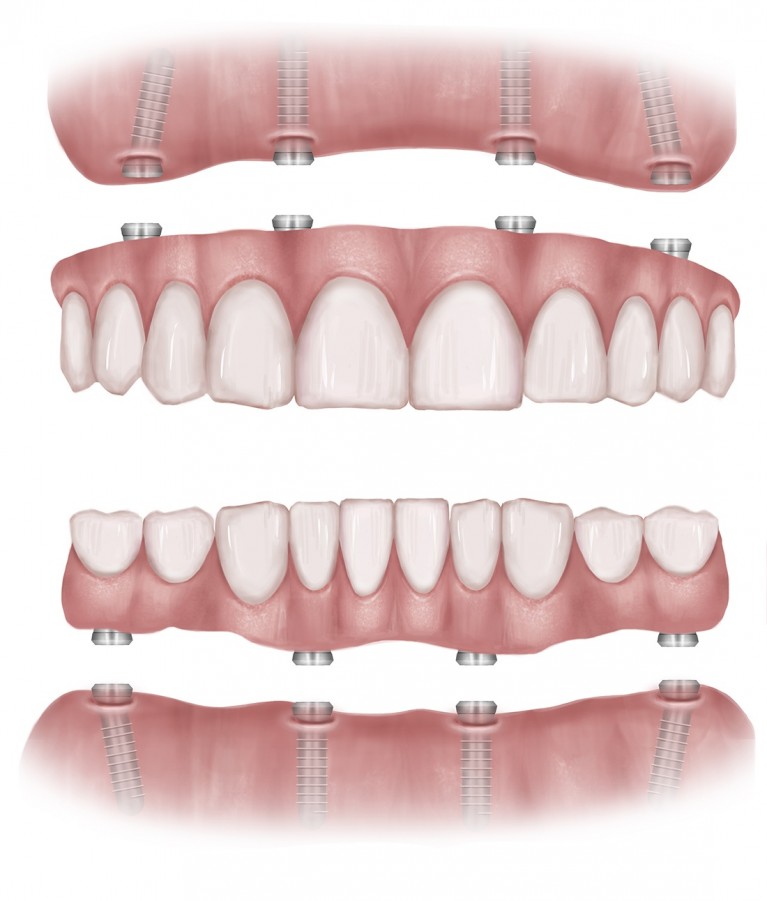What to Expect as a patient Before, During and After IV Sedation Dentistry
Have you been searching for a way to alleviate anxiety during dental procedures? IV sedation dentistry offers a profound state of relaxation, enabling a comfortable dental experience, especially for patients with heightened dental anxiety or for those undergoing complex dental treatments. This article unpacks the specifics of IV sedation, from how it works to ensuring your safety, to help you determine if it’s the right fit for you.
Key Takeaways
- IV sedation dentistry is an effective method for managing patient anxiety during dental procedures, providing a high level of relaxation while allowing dose adjustments and constant vital signs monitoring.
- Proper preparation for IV sedation is crucial, including steps like fasting, reviewing medical history, stopping certain medications, and arranging transportation, as patients cannot drive post-sedation.
- IV sedation offers several advantages over other sedation methods, including immediate effect, precise control, and suitability for various dental procedures, but requires specialized training for dentists to administer safely and effectively.
Exploring IV Sedation in Dental Care
IV sedation dentistry involves the use of iv dental sedation drugs administered intravenously, directly into your bloodstream, to help you feel relaxed and comfortable during dental procedures. This form of sedation is known for its effectiveness in managing patient anxiety. Common sedatives used in IV sedation include benzodiazepines like midazolam, which are known for inducing drowsiness and amnesia, effectively managing patient anxiety. The sedatives are administered directly into your bloodstream, inducing a relaxed state where you remain responsive to instructions but are not fully conscious.
IV sedation dentistry is widely recognized as the most profound form of conscious sedation that can be offered in a dental setting. It provides patients with a high level of relaxation during dental procedures, often referred to as deep sedation. It allows for constant monitoring and dose adjustments if necessary, ensuring patient safety and comfort. With IV sedation, you remain drowsy but can respond to instructions, a state often referred to as conscious sedation. This form of sedation reduces your breathing and enhances relaxation, comfort, and reduced fear, all while your vital signs are constantly monitored for safety.

What is IV Sedation?
IV sedation is a form of conscious sedation that involves administering sedative drugs directly into your bloodstream through an intravenous (IV) line. This method of delivery allows for immediate response and well-controlled sedation, making you feel relaxed and comfortable during your dental treatment. It’s remarkable how, with IV sedation, you can be in a state of enhanced relaxation and comfort, yet still be able to respond to your dentist’s instructions.
You might be wondering, “What does it feel like to be under IV sedation?” Most patients describe the experience as feeling drowsy or sleepy, yet still being able to respond to verbal cues. After the procedure, you may not remember much, if anything, about the treatment due to the amnesic effect of the sedation. This is one of the reasons why IV sedation is often preferred by patients with severe dental anxiety or those undergoing lengthy procedures.
The Role of IV Sedation in Managing Dental Anxiety
Dental anxiety can be a significant obstacle for many people in receiving the dental care they need. IV conscious sedation dentistry specializes in providing dental care for patients with dental anxiety and apprehension. Dentist perform sedation, particularly IV sedation, which is beneficial for people with severe dental anxiety or those undergoing lengthy procedures. It allows you to fall asleep and have little to no memory of the treatment, making your visit to the dentist less stressful and more comfortable.
But it’s not just those with dental anxiety who can benefit from IV sedation. If you have a strong gag reflex, you might find dental procedures uncomfortable. IV sedation can help by enhancing your comfort during dental procedures. Similarly, if you experience fear of needles, extreme teeth sensitivity, or claustrophobia in the dental chair, IV sedation can provide relief and make your dental experience more pleasant.
Types of Procedures That May Require IV Sedation
You might be wondering, “What kind of dental procedures require IV sedation?” Well, IV sedation is often used in procedures like implant surgery and tooth extractions. However, the use of IV sedation is not limited to these procedures. It is available for virtually any dental procedure, indicating its wide applicability in facilitating pain-free and anxiety-free dental care.
So, whether you’re in need of a simple tooth extraction or more complex procedures like implant surgery, IV sedation could be an option for you. By providing a deep level of relaxation and comfort, IV sedation allows you to undergo dental procedures with ease, virtually eliminating the stress and anxiety associated with dental visits.
Preparing for Your IV Sedation Appointment
Before undergoing IV sedation for a dental procedure, there are several preparation steps you should take. Preparing for IV sedation is crucial due to the temporary loss of mental faculties, ensuring patient safety and comfort. Prior to the procedure, you’ll need to:
- Avoid eating or drinking for 6-8 hours
- Stop taking certain medications
- Provide a complete medical history
- Arrange a driver for transportation
You should also wear comfortable clothing and closed-toe shoes to minimize tripping hazards post-procedure.
Let’s delve deeper into these preparation steps, starting with a thorough medical history review.
Medical History Review
Before undergoing IV sedation, a thorough review of your medical history is essential to determine the safety and suitability of IV sedation for your dental procedure. This includes:
- Any recent surgeries
- Allergies
- Existing medical conditions
- Any prescription medications you’re currently taking
Be sure to inform your dentist of all these factors to prevent potential drug interactions during the IV sedation process.
Providing a complete and accurate medical history allows your dentist to determine if IV sedation is safe and suitable for you. It also helps your dental team prepare for any potential complications, ensuring your safety and comfort during the procedure.
Pre-Procedure Instructions
After your medical history review, your dentist will provide specific instructions to prepare for your IV sedation appointment. These include fasting guidelines, which typically involve avoiding any food or beverages, including water, for at least six hours before the appointment. If you’re taking regular medications, you should continue doing so unless directed otherwise by your dentist. This is particularly important for those on blood thinners or diabetes medications, which can be taken with a small sip of water even during the fasting period.
Your dentist may also instruct you on taking any prescribed medications or mouth rinses that are intended specifically for use before the IV sedation procedure. Following these pre-procedure instructions is crucial for your safety and comfort during the procedure.
Arranging Transportation
Lastly, you should arrange for a designated driver to accompany you to and from your dental office appointment. Due to the effects of sedation, it’s crucial that you don’t attempt to drive or return home alone using public transportation. Having a responsible adult to escort you ensures your safety and allows for a smooth transition back home.
Remember, safety should always be a priority when undergoing IV sedation dentistry. By arranging transportation in advance, you can ensure a safe and hassle-free experience before and after your dental procedure.
The IV Sedation Experience: During and After the Procedure
Now that we’ve covered what IV sedation is and how to prepare for it, let’s delve into what you can expect during and after the procedure. The IV sedation experience involves constant monitoring during the procedure, post-sedation care, and long-term benefits.
Let’s start with what happens during the procedure.
During the Procedure
During the procedure, your dentist can constantly adjust the level of IV sedation to accommodate your needs for comfort and manage your level of anxiety. Your heart rate, blood pressure, oxygen levels, consciousness, ventilation, and circulation are monitored to ensure your safety during the sedation process. Pain medicine, anti-inflammatories, or steroids required for the procedure are administered directly through the IV line, providing immediate response and well-controlled sedation.
One unique aspect of IV sedation is that it can make you feel as if you’re in a dream-like state, where you’re aware but not fully conscious. Most patients have little to no recollection of the surgery due to the continuous administration of sedatives through an IV during the procedure. This can be especially beneficial for those with severe dental anxiety, as it can make your dental visit feel like a dream.
Post-Sedation Care
Following your IV sedation procedure, it is common to experience drowsiness for a few hours afterwards. This is a normal reaction to the sedative medication. It’s crucial to have someone available to assist you at home during this time, as you might experience ‘sedation amnesia’ with limited or no memory of the procedure.
Here are some important guidelines to follow for the 24 hours post-procedure:
- Avoid strenuous activities
- Do not take any medications that have not been approved by your dentist
- Do not consume alcohol
- Avoid operating heavy machinery
- Refrain from making significant decisions
By following these guidelines, you can ensure a safe and smooth recovery after your IV sedation procedure.
While you may feel fine after the treatment, it’s important to remember that you’ve undergone a medical procedure and should take the necessary time to rest and recover. One of the benefits of IV sedation is that it typically allows for a quicker recovery compared to oral sedation due to the faster metabolism and clearance of IV-administered sedatives.
Long-Term Benefits of IV Sedation
Apart from making your dental procedure more comfortable, IV sedation also has long-term benefits. IV sedation allows you to undergo procedures with little to no recollection of the treatment, which can be beneficial for those with severe dental anxiety. This reduced recall of the treatment process may help reduce potential future anxiety related to dental care.
Moreover, IV sedation offers the following benefits:
- It can be adjusted in dosage during procedures, allowing for a tailored sedation experience and better management of patient comfort over time.
- It makes dental visits more comfortable.
- It can help improve your overall attitude towards dental visits in the long run.

IV Sedation Safety and Regulation
Now that we’ve discussed the benefits of IV sedation, it’s essential to understand the safety measures and regulations involved in IV sedation. IV sedation is the most profound level of conscious sedation accessible in dentistry, with sedative drugs being administered straight into the bloodstream. Ensuring the safety of IV sedation in dentistry mandates a thorough review of the patient’s comprehensive medical history to identify possible negative interactions with the anesthesia.
The direct administration method of IV sedation offers several advantages:
- Immediate adjustment of dosages to meet the patient’s needs, ensuring patient safety
- Strict regulations to ensure proper administration
- Reversal medications as an integral part of IV sedation protocols, providing an additional layer of safety by counteracting the effects of sedatives if necessary.

Training and Qualifications of Providers
Believe it or not, only a small percentage of dentists are qualified to offer IV conscious sedation. To provide IV sedation, dentists must complete a comprehensive IV sedation training program that involves didactic study and practical experience with live patients. The typical IV sedation certification course requires 60 hours of classroom study and hands-on experience with over 20 patients.
In some countries, such as Japan, additional training and certification are required for practitioners to perform intravenous sedation. This involves approximately 3 years of full-time training and passing a board examination for certification. This rigorous training ensures that dentists offering IV sedation are highly qualified and competent in administering sedation safely and effectively.
Monitoring and Emergency Protocols
During the IV sedation process, it’s critical that your vital signs are closely monitored. The American Society of Anesthesiologists recommends monitoring the following during IV sedation:
- Responsiveness
- Blood pressure
- Respiratory rate
- Heart rate
- Oxygen saturation
Direct observation, auscultation, and end-tidal CO2 monitoring are key methods to ensure adequate ventilation alongside oxygen saturation monitoring during IV sedation.
Dentists and oral and maxillofacial surgeons are trained to promptly respond to potential complications such as respiratory depression or obstruction, hypoxia, and cardiovascular incidents during IV sedation. This meticulous monitoring and preparedness for emergency situations ensure that IV sedation is not only effective but also safe for patients.
Comparing IV Sedation to Other Forms of Sedation Dentistry
IV sedation isn’t the only form of sedation dentistry. There are several other types, including nitrous oxide, oral conscious sedation, and general anesthesia. Each form of sedation has its unique characteristics and uses.
Let’s take a closer look at how IV sedation compares to these other forms of sedation dentistry.
Oral Sedation vs. IV Sedation
Oral sedation involves swallowing pills on an empty stomach, whereas IV sedation involves the direct administration of drugs via an IV line for an immediate effect. While both forms of sedation aim to make you feel relaxed and comfortable during your dental treatment, there are some notable differences. Benzodiazepines, which reduce anxiety, are typically used in oral sedation, whereas IV sedation can include a range of medications such as anxiety reducers, strong pain relievers, and anti-inflammatories.
One unique advantage of IV sedation is the precise control it offers over sedation levels. Your dentist can continually adjust the level of sedation throughout the procedure, ensuring your comfort at all times. IV sedation also allows for a longer period of amnesia post-procedure, making it a preferred choice for those with severe dental anxiety.
Nitrous Oxide (“Laughing Gas”) vs. IV Sedation
Nitrous oxide, also known as “laughing gas,” provides a milder form of sedation, allowing you to be awake and communicative during the procedure. IV sedation, on the other hand, offers a deeper level of sedation. Both nitrous oxide and IV sedation are forms of conscious sedation, meaning you can be awakened and keep your own breathing.
While nitrous oxide provides a lighter level of sedation, it also allows for a swift recovery. After receiving nitrous oxide, you can resume normal activities and even drive home safely. On the other hand, IV sedation requires that you arrange for someone to drive you home due to its deeper level of sedation.
General Anesthesia vs. IV Sedation
General anesthesia is another form of sedation often used in dentistry. Unlike IV sedation, which allows you to remain conscious and responsive to instructions, general anesthesia renders you completely unconscious. This can be beneficial for certain patients, such as young children, those with special needs, or those with severe dental anxiety.
However, it’s important to note that patients under IV sedation generally experience shorter recovery times compared to those under general anesthesia. This rapid recovery is one of the many reasons why many patients and dentists prefer IV sedation for dental procedures.
Who Should Consider IV Sedation Dentistry?
So, who should consider IV sedation dentistry? IV sedation dentistry is particularly appropriate for patients who have severe dental anxiety or require lengthy dental procedures. But it’s not just for those with dental anxiety or those undergoing complex procedures. Sedation dentistry can be beneficial for individuals of all ages, from children to adults.
Ultimately, your dentist is responsible for determining if you are a right candidate for IV sedation. If you’re considering IV sedation for your next dental procedure, it’s important to have a detailed discussion with your dentist about your medical history, dental anxieties, and the specific procedure to determine if IV sedation is the right choice for you.
Summary
Throughout this blog post, we’ve explored the world of IV sedation dentistry, from what it is and how it works to its benefits and safety measures. We’ve learned that IV sedation can significantly improve the dental experience for those with severe dental anxiety, those undergoing lengthy procedures, or those with specific dental fears. By providing a deep level of relaxation and comfort, IV sedation can transform your dental visits, making them less stressful and more comfortable. So, whether you’re due for a routine dental check-up or preparing for a complex dental procedure, consider IV sedation dentistry. It could be the key to a calm, comfortable, and anxiety-free dental experience.
Frequently Asked Questions
IV sedation involves the administration of sedative drugs directly into your bloodstream through an IV line, inducing deep relaxation and comfort during a dental procedure while still allowing the patient to respond to instructions.
IV sedation is recommended for individuals with severe dental anxiety, those undergoing lengthy dental procedures, or those with specific dental fears such as a fear of needles or a strong gag reflex. It can help make the dental experience more comfortable for these patients.
To prepare for your IV sedation appointment, make sure to provide your complete medical history, follow any fasting instructions, and arrange for someone to drive you to and from the appointment. This will help ensure a smooth and safe experience.
IV sedation offers a deeper level of sedation compared to other forms, such as oral sedation or nitrous oxide, while still allowing the patient to remain conscious and responsive to instructions. This makes it a preferred option for many dental procedures.
Yes, IV sedation is safe when administered by a trained and certified provider with thorough medical history review and constant vital sign monitoring.
 2918 Spencerville Rd, #124Burtonsville, MD 20866
2918 Spencerville Rd, #124Burtonsville, MD 20866  (301) 421 1118
(301) 421 1118 





0 Comments
No comments yet. Be the first to comment!
Comments are closed.